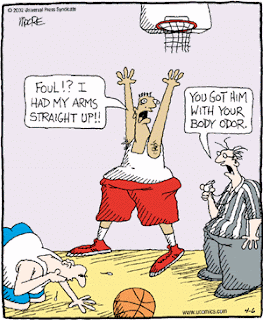MSG....... the first thing that pops out of our mind is MEGGI instant noodles.
Well, actually there is more MSG than we know. Monosodium glutamate, or MSG, is the sodium salt of glutamate. When MSG is added to its foods, it provides a similar flavoring function as the glutamate that occurs naturally in food.
MSG is a flavour enhancer that has been used effectively to bring out the best taste in food, emphasizing natural flavors.
MSG produces a taste known as "unami", which corresponds to the savory sensations
found in meat, potatoes and rich greens such as seaweed.
 What food contains MSG?
What food contains MSG?
Because MSG simulates the savory, rich flavor produced by meat, it is used in large quantities in bouillon. Thus, one of the most concentrated sources of MSG is meat-flavoring cubes for stocks, stews and soups. Example of food is the soup base for instant noodles and Bouillon chicken stock cubes.
Other than that, MSG is found in canned meat. Producers of canned meat are likely to include MSG to combat the loss of flavor and to lower the quality of the meat itself. It will typically included on the ingredients label as "monosodium glutamate". Canned meat such BKL luncheon meat.
It works well with meats, poultry, seafood and many vegetables. MSG does not substitute for bad cooking, it just makes good food taste better.
Is MSG high in sodium?
No. MSG contains only one-third the amount of sodium as table salt and is used in much smaller amounts. When used in combination with a small amount of table salt, MSG can help reduce the total amount of sodium in a recipe by 20 to 40 %, while maintaining an enhanced flavor.
Is MSG harmful?
No. MSG is one of the most extensively researched substances in the food supply. Numerous international scientific evaluations have been undertaken over many years, involving hundreds of studies. The United States and other governments worldwide support the safety of MSG as used in foods. MSG is not an allergen, according to the American College of Allergy, Asthma and Immunology.The U.S. Food and Drug Administration has found no evidence to suggest any long-term, serious health consequences from consuming MSG.It is possible that some people might be sensitive to MSG, just as to many other foods and food ingredients. There are some reports that mild, temporary reactions to MSG may occur in a small portion of the population, based on tests with a large dose of MSG in the absence of food. So, it does not cause harm to people consuming it.
How is it made?
In the early 1900s, MSG was extracted from
In the early 1900s, MSG was extracted from
natural protein-rich foods such as seaweed. Today, MSG is made from starch, corn sugar or molasses from
sugar cane or sugar beets. MSG is produced by a natural fermentation process that has been used in centuries to make such common foods s beer, vinegar and yogurt.
 What food contains MSG?
What food contains MSG?Because MSG simulates the savory, rich flavor produced by meat, it is used in large quantities in bouillon. Thus, one of the most concentrated sources of MSG is meat-flavoring cubes for stocks, stews and soups. Example of food is the soup base for instant noodles and Bouillon chicken stock cubes.
Other than that, MSG is found in canned meat. Producers of canned meat are likely to include MSG to combat the loss of flavor and to lower the quality of the meat itself. It will typically included on the ingredients label as "monosodium glutamate". Canned meat such BKL luncheon meat.
It works well with meats, poultry, seafood and many vegetables. MSG does not substitute for bad cooking, it just makes good food taste better.
Is MSG high in sodium?
No. MSG contains only one-third the amount of sodium as table salt and is used in much smaller amounts. When used in combination with a small amount of table salt, MSG can help reduce the total amount of sodium in a recipe by 20 to 40 %, while maintaining an enhanced flavor.
Is MSG harmful?
No. MSG is one of the most extensively researched substances in the food supply. Numerous international scientific evaluations have been undertaken over many years, involving hundreds of studies. The United States and other governments worldwide support the safety of MSG as used in foods. MSG is not an allergen, according to the American College of Allergy, Asthma and Immunology.The U.S. Food and Drug Administration has found no evidence to suggest any long-term, serious health consequences from consuming MSG.It is possible that some people might be sensitive to MSG, just as to many other foods and food ingredients. There are some reports that mild, temporary reactions to MSG may occur in a small portion of the population, based on tests with a large dose of MSG in the absence of food. So, it does not cause harm to people consuming it.
Yes.Infants, including premature babies, metabolize glutamate the same as adults. Research has shown that newborn infants are able to detect and prefer the taste of glutamate. Glutamate is actually 10 times more abundant in human breast milk than in cow's milk.





















